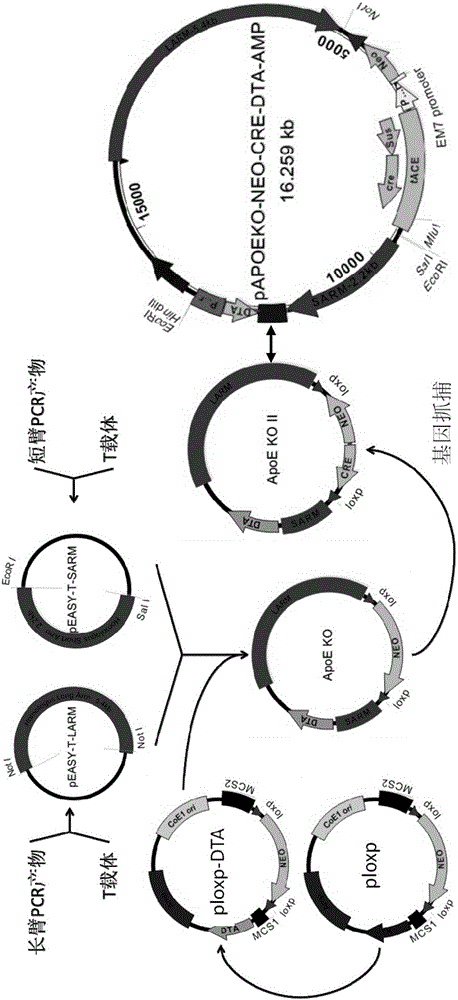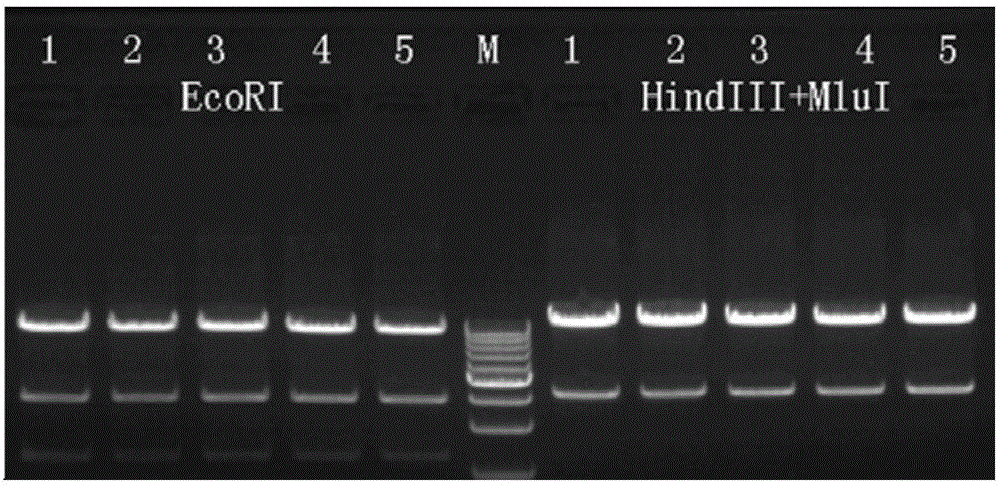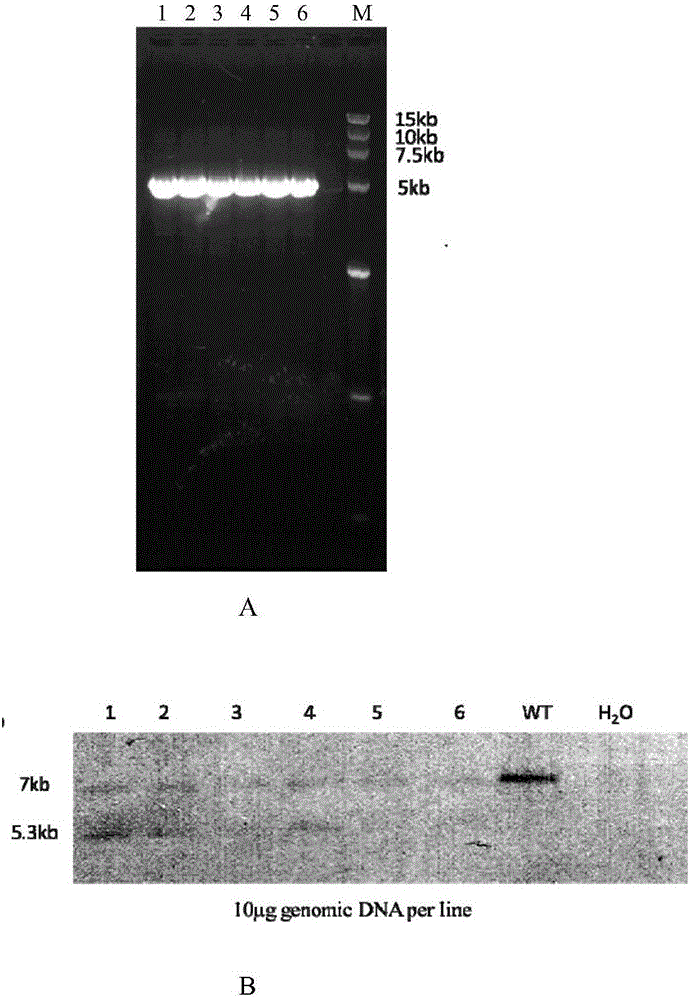Targeting vector with swine ApoE gene knocked out as well as construction method and applications of targeting vector
A targeting vector and gene knockout technology, applied in the field of genetic engineering, can solve the problems of difficult experimental operation, high experimental cost, inconvenient research, etc., and achieve the effect of improving the enrichment efficiency.
- Summary
- Abstract
- Description
- Claims
- Application Information
AI Technical Summary
Problems solved by technology
Method used
Image
Examples
Embodiment 1
[0043] Example 1 Construction of porcine ApoE gene knockout targeting vector
[0044] Include the following steps:
[0045] Step 1: Transform the targeting vector pLoxPneo (ie ploxp) by enzyme cutting-ligation method, and introduce the negative selection gene DTA to obtain the vector ploxp-DTA.
[0046]Step 2: Using the high-fidelity PCR method to use the genomic DNA of minipigs as a template, amplify a 2.4kb fragment as the 5' homology arm, and simultaneously amplify a 5.7kb fragment as the 3' homology arm, and connect the PCR products Sequencing in the T vector, the nucleotide sequence of the 5' homology arm is shown in SEQ ID NO:1, and the nucleotide sequence of the 3' homology arm is shown in SEQ ID NO:2.
[0047] The primer sequence for amplifying the 5' homology arm is as follows (5'-3'):
[0048] SARM-F: GAATTCAGGCTTTGGTTCCAGAGTTCACAG
[0049] SARM-R: GTCGACAGGCAACAACGCATTAGAAACAG
[0050] Among them, the underlines are the restriction sites of EcoRI and SalI respec...
Embodiment 2
[0057] Example 2 Transfection of pig fetal fibroblasts and cell screening and identification
[0058] Using a nucleic acid transfection instrument produced by Lonza, Germany, 3 μg of the linearized targeting vector ApoE KO II was transferred into pig fetal fibroblasts.
[0059] After 48 hours of cell transfection, the cells were digested from the T75 cell culture flask by trypsinization method, and each 100mm cell culture dish was connected with 4×10 5 Cells were selected for 7-9 days with G418 concentration of 500 μg / mL cell culture medium.
[0060] Cell clones with G418 resistance were selected with a cell cloning ring and inoculated into 48-well cell culture plates. After the cells were cultured to 80% confluence, after trypsinization, they were inoculated into 12-well cell culture plates to continue culturing. The original 48 The undigested cells in the well cell culture plate were also continued to be cultured for the extraction of cellular genomic DNA, and then the cell...
Embodiment 3
[0073] Example 3 Production and Identification of Homozygous Transgenic Cloned Pigs
[0074] 1. Production of transgenic cloned pigs
[0075] 1) In vitro maturation of porcine oocytes: Take the ovary from the slaughterhouse, put it in the normal saline containing penicillin and streptomycin sulfate at 28°C-35°C, transport it back to the laboratory within 2 hours, and use a 20-gauge needle equipped with a 18-gauge needle Aspirate follicles with a diameter of 3-6 mm on the ovary with a 3-ml syringe, put the extracted solution in a 50-ml centrifuge tube, let it stand in a water bath at 37°C for 15 minutes, remove the supernatant, add HEPES to resuspend the precipitate, and let it stand for 15 minutes. Repeat once more, put the resuspension into a plastic petri dish with a diameter of 60 mm, and under a stereomicroscope, use a mouth pipette to select cumulus cell-oocyte complexes with more than 2 layers of cumulus wrapping, dense and uniform cytoplasm, Wash 3 times with the matur...
PUM
 Login to View More
Login to View More Abstract
Description
Claims
Application Information
 Login to View More
Login to View More - R&D
- Intellectual Property
- Life Sciences
- Materials
- Tech Scout
- Unparalleled Data Quality
- Higher Quality Content
- 60% Fewer Hallucinations
Browse by: Latest US Patents, China's latest patents, Technical Efficacy Thesaurus, Application Domain, Technology Topic, Popular Technical Reports.
© 2025 PatSnap. All rights reserved.Legal|Privacy policy|Modern Slavery Act Transparency Statement|Sitemap|About US| Contact US: help@patsnap.com



